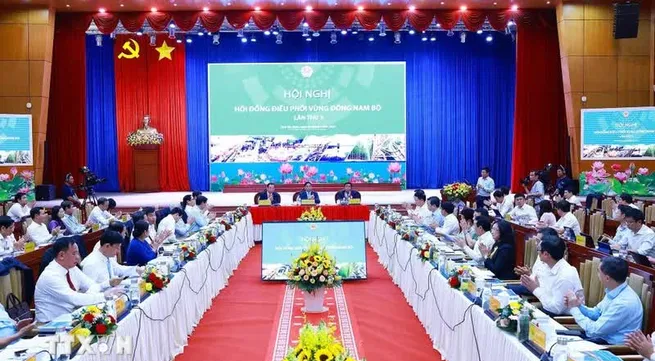PM chairs meeting on southeastern regional development

The focus of the event was the implementation of the recently approved master planning scheme for the southeastern region for the 2021-2030 period with a vision until 2050.
Speaking at the event, PM Chinh directed improving the effectiveness of regional coordination, development and connectivity, with a focus on the building of mechanisms and policies to achieve these goals.
He asked ministries, agencies, localities and members of the council to promptly build a concrete action plan to carry out the master planning scheme.
The plan should prioritise economic restructuring with priority given to sectors of strengths, hi-tech industries such as semiconductor chips, high value-added services such as e-commerce, regional-scale logistics centres, Can Gio international transshipment port, Ba Ria - Vung Tau Free Trade Zone, and Ho Chi Minh City International Financial Centre, he suggested.
Underscoring the importance of workforce training, fostering innovation and creativity, and streamlining administrative procedures, the PM described them as crucial to improve the business environment.
The Government leader also pledged to consider localities’ proposals and assigned specific tasks to ministries, agencies and localities.
The southeastern region is envisioned to transform into a modern and civilised region with a thriving industrial sector by 2030. It aims to surpass the high-income threshold and become a leader in adopting new growth models, digital transformation, and the development of cultural, social, educational and healthcare sectors.
It aspires to become a premier hub for the digital economy, attracting international financial institutions and major global corporations. It envisions itself as a centre for economic, financial, commercial, cultural, educational, and scientific-technological activities within Vietnam, holding a prominent position in Southeast Asia and evolving alongside major Asian cities.
The region aims for an average annual GRDP growth rate of 8-9% between 2021 and 2030, with per capita GRDP of some 14,500 - 16,000 USD. The service sector is expected to make up 41-42% of the region's GRDP, while industry and construction are hoped to contribute 45-46%, and agriculture, forestry and fisheries about 2-3%. The rate of trained labourers with certified qualifications is targeted at 40-45% while the unemployment rate will stay below 3%.





